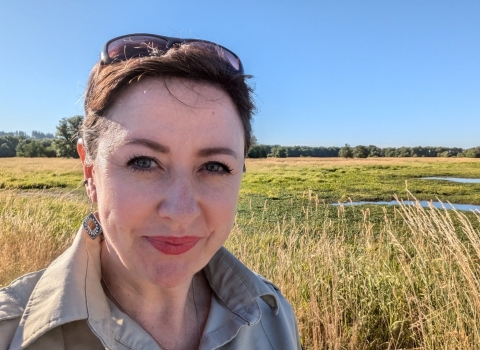The U.S. Fish and Wildlife Service has released “Building a Stronger Coast: Prime Hook National Wildlife Refuge,” an up-close look at coastline and salt marsh salt marsh
Salt marshes are found in tidal areas near the coast, where freshwater mixes with saltwater.
Learn more about salt marsh restoration at the refuge following Hurricane Sandy in 2012. The restoration strengthens the marsh’s ability to absorb the effects of storms and sea-level rise, while enhancing habitat for migratory birds and other wildlife.
The four-and-a-half-minute video documents the restoration of 4,000 acres of coastal marsh and one mile of dunes and barrier beach, which took 18 months to complete.
“Restored marshes within Prime Hook refuge will provide benefits to several adjacent and nearby communities such as Milton and Milford and create additional habitat for birds such as red knots, American oystercatchers, and piping plovers,” said U.S. Fish and Wildlife Service Regional Director Wendi Weber. “At Prime Hook and throughout the Atlantic Coast region, these kinds of projects also improve water quality, provide recreation opportunities — such as fishing, hiking, wildlife watching and more — and support the local coastal tourism economy.”
“The project is an investment that is already paying off,” said U.S. Sen. Tom Carper, who is featured in the film. “The dunes are holding up, the marsh is rebounding, and wildlife is thriving. I hope other areas of our country – and the world -- can learn from this success.”
Also appearing in the video are Delaware Sen. Gary Simpson (R-Milford), University of Delaware Professor of Oceanography Dr. Chris Sommerfield, Broadkill Beach resident Joan Winchester, Refuge Manager Al Rizzo, and other Service staff.
Partners in the restoration project include the State of Delaware, the U.S. Army Corps of Engineers, the Federal Highway Administration, the National Oceanographic and Atmospheric Administration, the U.S. Geological Survey, and the National Wildlife Federation.
Located on Delaware Bay, along the Atlantic Flyway, Prime Hook is a key stopover site for hundreds of thousands of migratory birds, including federally listed species such as rufa red knots. The bay hosts the world’s largest population of horseshoe crabs, whose eggs sustain the migrating shorebirds. Local residents and tourists alike enjoy recreation such as fishing, hiking, and wildlife watching at the refuge.
Managed for decades as a freshwater marsh, the marsh is once again open to tidal flow, which will let salt marsh plants to return. A new low, flat dune and barrier beach offer a natural defense against rising water.
Storm-tide sensors were placed in the bay to monitor the project’s success. They measure wave height, speed, force, and extent during storms. The information will help scientists create more accurate models for storm surge and flood forecasting, as well as better understand how restored areas like wetlands and marshes spread storm-tide and wave energy.
Sen. Carper considers the project a sound investment that supports local economies, communities, and wildlife in a time of increasing threat from sea-level rise and storms. He holds it up as a model for others.
“Eight years ago, Prime Hook National Wildlife Refuge was experiencing record flooding that threatened its habitats and communities,” said Carper. “When Superstorm Sandy hit Delaware so hard four years ago, the refuge’s problems became even worse. Prime Hook is not only home to hundreds of species of plants and animals, but it’s also a part of our state’s economy, attracting tourists from all over the world.
“It was especially important to me that any effort the government undertook be science-based and include mitigation measures that will protect our fragile ecosystems, homes, businesses and, above all else, lives from future storms. This is especially important as climate change climate change
Climate change includes both global warming driven by human-induced emissions of greenhouse gases and the resulting large-scale shifts in weather patterns. Though there have been previous periods of climatic change, since the mid-20th century humans have had an unprecedented impact on Earth's climate system and caused change on a global scale.
Learn more about climate change drives the sea level to rise and increases the severity and frequency of coastal storms.”
State Sen. Simpson adds, “A healthy marsh system is so important to protect the ecosystem of coastal Delaware and increase the supply of clean water for our state. Federal funding for Hurricane Sandy recovery has provided us with a window of opportunity to protect this fragile marsh, while also helping to protect our coastal bay-front communities from flooding.“
The $38-million project was supported by federal funding for Hurricane Sandy recovery.
The video is available on YouTube at https://youtu.be/oanf275Hrx4.


